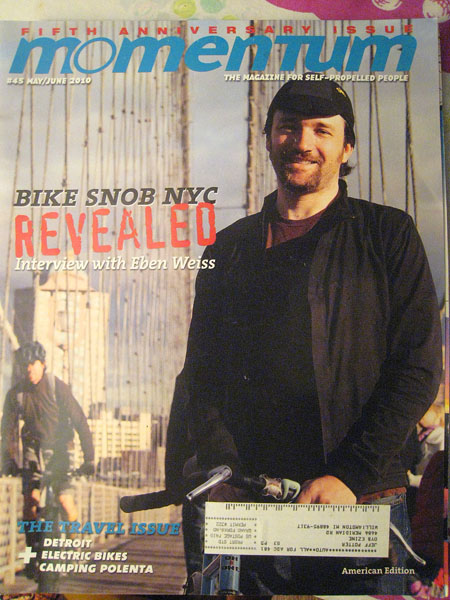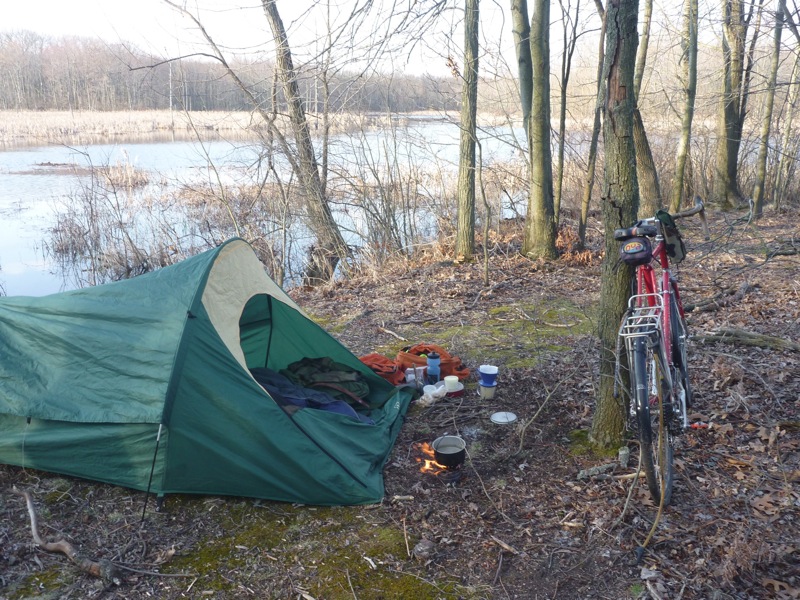I’ve lately been seeing actual sales pitches based on the idea that pro bike stuff is “what you want.” I’d thought it was a bit of retro-fan exaggeration that everyday riders were being sold hard on exotic pro equipment. I hadn’t read mainstream bike media in ages. But I’ve glanced at more of it this summer and have already seen several uses of this pitch. It’s crazy. What Lance uses is NOT what you should use, unless you’re Lance or someone like him.
To state the obvious—especially for OYB people, probably—if you’re a pro racer, use pro equipment. Otherwise, let YOUR needs lead.
Here’s an example: I know a top bike racer who just retired. We were riding with friends the other day and they wanted to go look at an art fair on the ride. He needed to bring some shoes and clothes. But his pro-bike tiny-ti-saddle couldn’t hold the saddlebag I had for him to borrow. Then, another friend was pulling his kid in a trailer. Now, it might’ve been nice if the ex-pro could’ve pulled the trailer awhile, so we wouldn’t go so slow on the big hills of the long ride—but I doubt the carbon stays on his pro-bike would’ve been safe for clamping a trailer-hitch to. Then on some of the rides we did we needed to take short-cuts down rocky, sandy, narrow roads and suddenly race-specific bikes were way wrong. As our ex-pro starts riding at half-effort he’ll start to feel all the bumps thru that rock-hard pro-bike, as he starts sitting heavier in the saddle and floating less on pistoning legs. He also wants to join us on a fall credit-card ride where we’ll strap racks on and bring small loads. Now, in sharp contrast, a traditional, versatile, steel race bike with relaxed angles and wider tolerances is a very lightweight bike that can do fine in amateur racing—and it will accept wider tires and is strong enough for racks and trailer-hitches, and comes with a wider more cushioned saddle for moderate-effort ride comfort. The ex-pro will be needing such a bike in a matter of weeks. His pro bike might as well be mothballed.
Let’s look again at the real bike-needs demographic breakdown:
A few riders are gung-ho enough to need almost-pro equipment—they’ll have a road bike, crit bike, training bike. But unless they’re rich they’ll not want short-lived pro gear, but something more durable instead.
A much bigger chunk of semi-racer-types race on the weekend and train during the week on the same bike. They would be well-served by a bike that can do that and more, like ride centuries in comfort or go on tour or go to the store on errands. They need a tough, versatile, comfortable bike that’s also light, stiff and fast. That takes care of another 5% of riders.
Another 25% or so do a couple races a summer and mostly like sport riding—they need a bike that’s designed with racing as only 25% of the profile.
By far most regular riders don’t race at all. They may well like a light, sporty bike but this is easily achieved in a bike that’s useful for a wide variety of uses and kinds of riding and road surfaces and which will last for decades. Beyond being light and well-made for their use, this has no relation to the needs of a pro racer. They’re entirely different bikes. Thus the “it’s like what the pro’s use” is a terrible sales pitch for most riders—it might work but it’s a lie. A pro-bike doesn’t even have to be well-made in general. It only has to be well-made in the specific: to do a certain kind of racing well for one season. Bike-makers should sell to the upper-end typical enthusiast rider instead with a pitch like: “This is a great, high-quality bike, purpose-built and designed for exactly the kinds of riding that you’ll do during the next 10 years!”
To try to put it in a nutshell again: pro bikes are designed for very skinny young riders of great, unnatural, highly trained flexibility and huge strength-to-weight ratio who have zero need for comfort, zero need for versatility and who rarely ride more than a few hours at a time and who need the bike to be right for the brief 110%-effort outings that are the focus of their sport. These bikes are designed for specific events and specific kinds of racing. Hardly any non-pro riders fit this profile.




